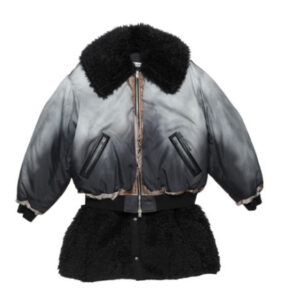

For many, the Hermès Birkin bag is an emblem of unattainable luxury, a status symbol whispered about in exclusive social circles and flaunted in paparazzi shots of celebrities and socialites. But for Jane Birkin, the woman behind the name, it was always something far simpler: a functional, lived-in object that carried her letters, shopping lists, books, and even groceries. This week, that deeply personal relationship between object and icon was enshrined in history when her original black Hermès Birkin bag sold at auction for an astonishing $15.2 million — a record-breaking moment that underscores the power of authenticity in a world often obsessed with acute uniqueness.
Jane Birkin, the English actress and singer who captured the heart of France, was never one to treat her bag delicately. Unlike pristine collectors who keep their Birkins under glass or guard them with white gloves, Birkin treated hers as a loyal companion. Over the decades, she adorned it with stickers, charms, beads, and protest buttons. The bag became as much a canvas as it was a vessel, reflecting her political stances, creative passions, and joyful spontaneity. With each scuff and scratch, it absorbed the life she poured into it, transforming into a living diary rather than a mere accessory.
The origins of the Birkin bag itself are as serendipitous as Birkin’s style. In 1981, Jane Birkin was seated next to then-Hermès chief executive Jean-Louis Dumas on a flight from Paris to London. As legend has it, her straw bag burst, spilling its contents. Birkin lamented the lack of a practical yet elegant bag that could hold everything she needed as a young mother. Inspired by this chance encounter, Dumas sketched the initial design on an airplane sick bag, eventually leading to what would become the most iconic handbag in the world.
The design was intended to embody utility and understated luxury. Large, supple, and crafted with Hermès’s unparalleled attention to craftsmanship, it was created for a woman like Birkin: free-spirited yet discerning, cosmopolitan yet grounded. Jane Birkin herself once said she never thought of it as a luxury item but rather as a “holding everything” bag. She even claimed she couldn’t understand why anyone would pay so much for one, considering she would often overload hers until the handles began to wear.
When her original Birkin bag appeared on the auction block this week, connoisseurs and collectors around the globe prepared for fierce bidding. But few could have anticipated the final hammer price: $15.2 million. This figure shattered previous records for any handbag sold at auction, cementing this particular Birkin not merely as a luxury artifact but as a piece of cultural and personal history.
Beyond the price tag, the sale of Jane Birkin’s bag represents a profound moment in fashion history. It is a striking reminder that luxury does not have to be synonymous with flawlessness. In a time when “unboxing” videos and hyper-curated social media images dominate the fashion discourse, the scuffed, sticker-laden Birkin stands as a testament to individuality and the beauty of imperfection. Each worn edge and faded corner tells a story, echoing Birkin’s own philosophy that style should reflect life lived, not life staged.
Indeed, this particular Birkin is not just a bag; it is an artifact of a woman who embodied nonchalance and authentic charm. Jane Birkin’s approach to fashion was always refreshingly casual. She mixed high and low with an insouciance that Parisian women have long sought to emulate. Whether wearing denim with a white T-shirt or layering chunky sweaters, Birkin always appeared as though she had thrown her outfit together in moments — and yet the effect was disarmingly chic.
The Birkin bag she carried became a symbol of this ethos. Unlike many fashion icons whose accessories remain frozen in time, perfectly preserved, Birkin’s bag evolved with her. It held family photos, notebooks filled with song lyrics, and protest fliers — an archive of her life. It even participated in her activism; she famously attached a sticker reading “Freedom to Lead,” which remains on the bag to this day. In this way, her Birkin became a living document of her life, beliefs, and loves.
The emotional weight behind the auction sale cannot be overstated. Bidders weren’t just vying for a luxury object but for a piece of Birkin’s spirit. As fashion historian and curator Dr. Caroline Evans remarked, “What we see in this sale is a collective yearning for authenticity, for the real story behind the myth. Jane Birkin’s bag embodies that beautifully.” For many, owning this Birkin means owning a fragment of a cultural moment, a slice of a life so fiercely individual yet so universally admired.
In the auction room, as the bids climbed higher and higher, there was a palpable energy — part reverence, part exhilaration. When the final price was announced, the room erupted in gasps and applause. Observers noted that even among the most seasoned collectors, there was a sense that something extraordinary had taken place. This wasn’t just the record-breaking sale of a handbag; it was a moment of collective recognition that personal stories, patinas, and imperfections can hold far greater value than pristine surfaces.
What does this sale mean for the future of luxury fashion? In an era increasingly dominated by mass production and fast fashion, Birkin’s bag offers a compelling counter-narrative. It suggests that true luxury lies not in scarcity or price but in personal connection and narrative depth. The Birkin’s journey from everyday companion to record-breaking auction item highlights the ways in which objects can acquire emotional resonance far beyond their original purpose.
The implications ripple beyond the auction house. Fashion brands are now under more pressure than ever to prove that their goods can stand the test of time — not just physically but emotionally. As consumers become more conscious and discerning, stories like Birkin’s inspire a return to authenticity. It challenges us to rethink what we value: Is it the pristine box-fresh item, or the weathered piece that has been shaped by life’s adventures?
Hermès itself has long capitalized on the mystique surrounding the Birkin bag. Traditionally, the bag has been marketed through exclusivity — long waitlists, elusive store policies, and the idea of an object so desirable that it cannot simply be bought, but must be earned. Jane Birkin’s relationship with her bag subverts this narrative. She transformed the ultimate status symbol into something deeply personal and approachable, reminding us that luxury can also be democratic and intimate.
In the days following the auction, tributes poured in from celebrities, designers, and fans around the world. Social media was awash with photos of Birkin through the decades, her faithful bag at her side. Many noted the contrast between her relaxed approach to style and the increasingly manicured and staged images that flood contemporary fashion media. Her legacy feels almost radical in its simplicity: style as an extension of life rather than an exercise in branding.
There is also a poignant cultural dimension to consider. Jane Birkin passed away in 2023, and this sale marks one of the first major public commemorations of her personal belongings. In this light, the auction becomes not just a commercial transaction but a moment of collective mourning and celebration. It is a chance for the world to reconnect with an icon who, even in her absence, continues to inspire and challenge us.
As the $15.2 million Birkin embarks on its new journey, it carries with it not just the spirit of Jane Birkin but also a message to future generations of fashion lovers. It urges us to live fully in our clothes and accessories, to let them reflect our real lives rather than a curated image. The idea that a worn, sticker-adorned handbag could command a record-breaking price forces us to reevaluate our relationship with our possessions — to see them as evolving partners in our life stories rather than static trophies.
For collectors, the new owner of the Birkin now holds a rare responsibility: to honor the story embedded in every scratch and sticker. Whether they choose to preserve it as is or continue to let it evolve, the bag’s journey remains an unfolding narrative, intimately tied to the life of its original muse.
In a world obsessed with the new and the flawless, Jane Birkin’s Birkin stands as a beautiful anomaly. It reminds us that wear and tear can be markers of love and living, that the true value of an object often lies in the memories it holds rather than its monetary worth. As fashion moves forward, perhaps this $15.2 million moment will inspire a deeper appreciation for the imperfect, the storied, and the real.
As the lights dimmed on the auction stage and the Birkin was carefully packed away, one could almost imagine Birkin herself watching with her signature mischievous smile, perhaps amused that her “holding everything” bag had become the most coveted handbag in the world. She would likely shrug, adjust her scarf, and step lightly back into the Paris streets — her spirit forever carried in every stitch and sticker of that legendary black Birkin.
No comments yet.








